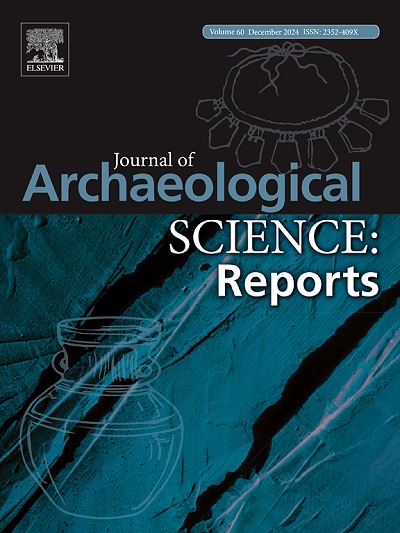The enigmatic ‘Newall boulder’ excavated at Stonehenge in 1924: New data and correcting the record
IF 1.5
2区 历史学
0 ARCHAEOLOGY
引用次数: 0
Abstract
Some authors have questioned whether the bluestone megaliths present at the Stonehenge Neolithic stone circle were transported from their source area in north Pembrokeshire, over 200 km to the west, by ice, rather than humans. There is scant evidence for either hypothesis and much debate on the matter since the 1990s has involved the so-called ‘Newall boulder’, a stone collected in 1924 by Lt-Col Hawley. Initial studies considered the boulder to be a glacial erratic and hence supported the ice transport hypothesis. More recent work discounted this interpretation and proposed that the boulder was a piece of rhyolite debitage, itself derived from a broken-up monolith, most likely Stone 32d, originally sourced from Craig Rhos-y-Felin, in north Pembrokeshire although this has been challenged in a recent study.
This paper aims to clarify the record regarding previous studies on the Newall boulder and samples taken from it for analysis and to correct errors of fact introduced into the current literature. Petrographic, automated SEM-EDS analysis and portable XRF investigation (including new analyses) relating to the characteristics and composition of the Newall boulder are presented, supporting (a) the interpretation that its original source was Craig Rhos-y-Felin, in north Pembrokeshire and (b) that there is no evidence to support an interpretation that it is a glacial erratic. In addition, it is shown that the overall non-sarsen lithological assemblage at Stonehenge is restricted, supporting derivation by human activity from a limited number of sites, predominantly from west Wales, but also NE Scotland, and not derived from glacial erratics.
1924年在巨石阵挖掘的神秘的“纽瓦尔巨石”:新数据和修正记录
一些作者质疑,巨石阵新石器时代的青石巨石是从彭布罗克郡北部200多公里的起源地向西运输的,而不是由人类运输的。这两种假设都缺乏证据,自20世纪90年代以来,关于这个问题的争论一直涉及所谓的“纽瓦尔巨石”,这是霍利中校于1924年收集的一块石头。最初的研究认为这块巨石是冰川的飘忽物,因此支持冰运输假说。最近的研究对这种解释提出了质疑,并提出这块巨石是一块流纹岩碎屑,它本身来自一块破碎的巨石,最有可能是石头32d,最初来自彭布罗克郡北部的克雷格·罗斯-y-费林,尽管这在最近的一项研究中受到了挑战。本文旨在澄清前人对纽瓦尔巨石的研究记录,并从中提取样本进行分析,并纠正当前文献中引入的事实错误。提出了与Newall巨石的特征和组成有关的岩石学、自动SEM-EDS分析和便携式XRF调查(包括新的分析),支持(a)其原始来源为彭布罗克郡北部的Craig Rhos-y-Felin的解释,以及(b)没有证据支持它是冰川不稳定的解释。此外,研究表明,巨石阵的整体非砂岩岩性组合是有限的,这支持了人类活动从有限数量的地点(主要来自西威尔士,但也包括苏格兰东北部)得出的结论,而不是从冰川不稳定中得出的。
本文章由计算机程序翻译,如有差异,请以英文原文为准。
求助全文
约1分钟内获得全文
求助全文
来源期刊

Journal of Archaeological Science-Reports
ARCHAEOLOGY-
CiteScore
3.10
自引率
12.50%
发文量
405
期刊介绍:
Journal of Archaeological Science: Reports is aimed at archaeologists and scientists engaged with the application of scientific techniques and methodologies to all areas of archaeology. The journal focuses on the results of the application of scientific methods to archaeological problems and debates. It will provide a forum for reviews and scientific debate of issues in scientific archaeology and their impact in the wider subject. Journal of Archaeological Science: Reports will publish papers of excellent archaeological science, with regional or wider interest. This will include case studies, reviews and short papers where an established scientific technique sheds light on archaeological questions and debates.
 求助内容:
求助内容: 应助结果提醒方式:
应助结果提醒方式:


